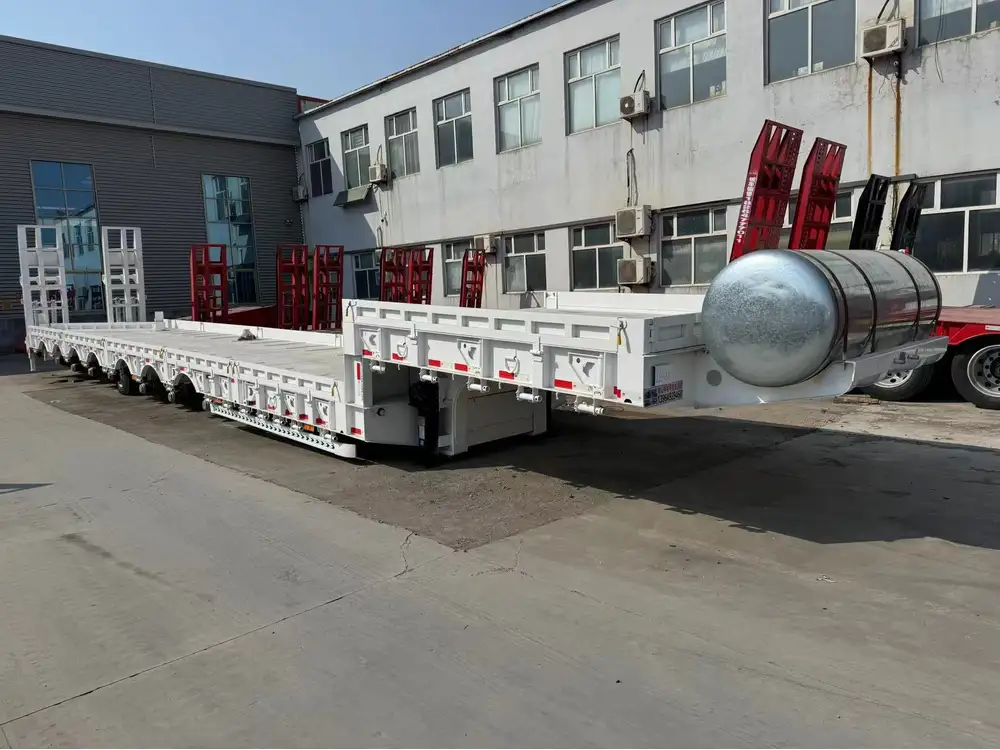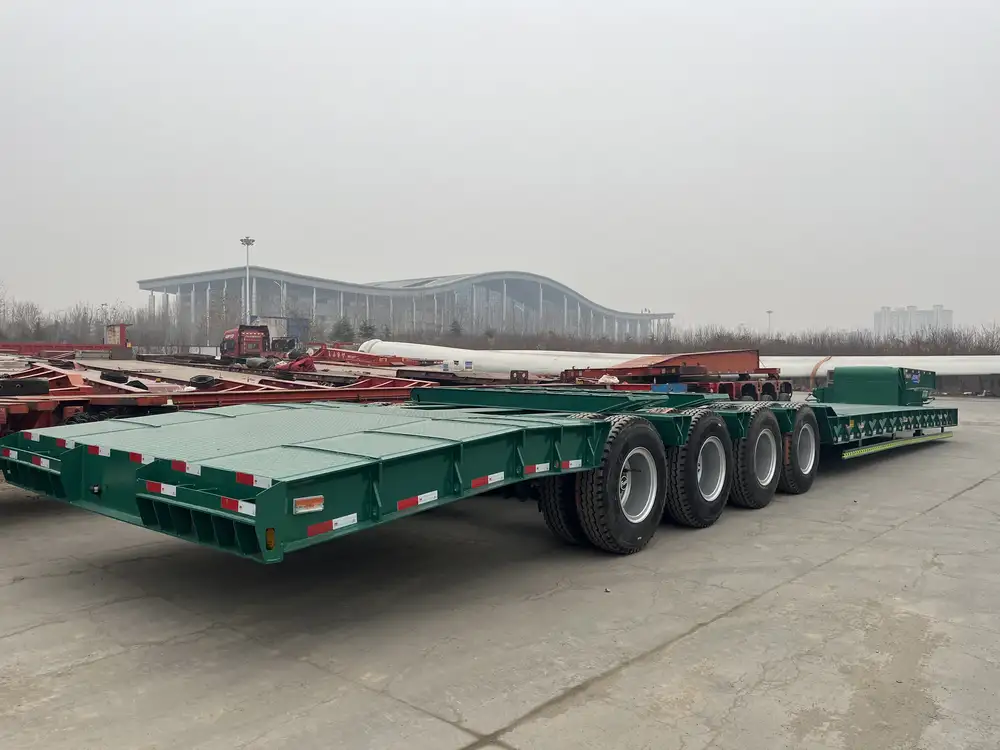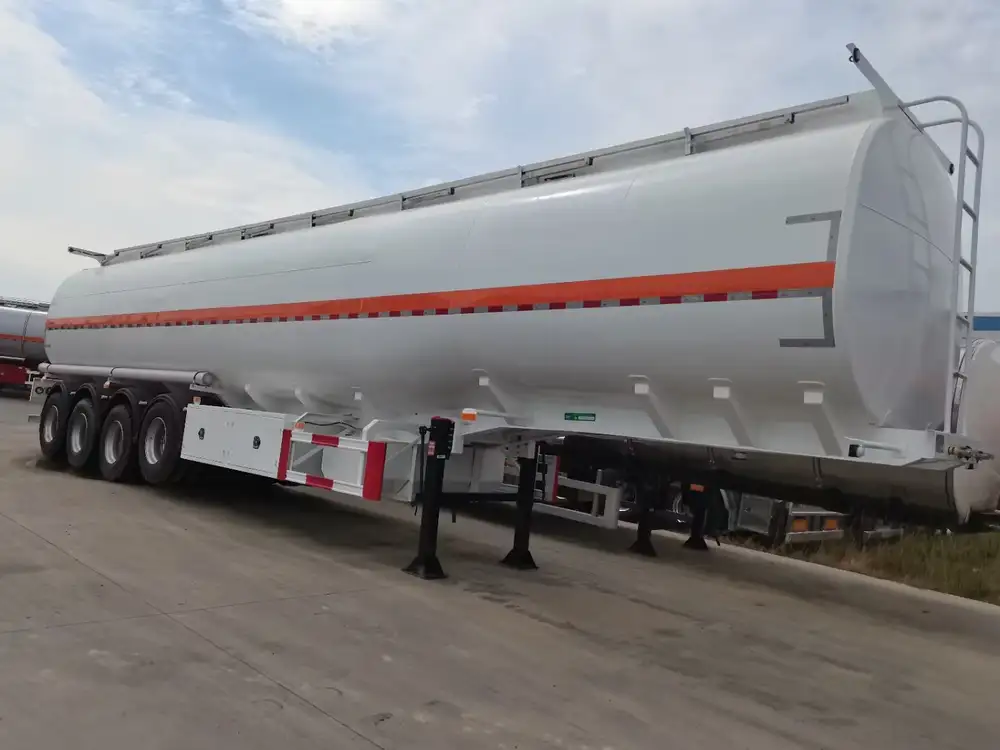In the logistics and transportation industry, the safe and efficient loading of fuel tankers is paramount. At CarMax Vehicle, we understand the complexities involved in handling hazardous materials and strive to provide the best practices to ensure seamless operations. This guide delves into the intricate process of loading a fuel tanker, highlighting essential steps, safety measures, and optimization strategies to enhance productivity and compliance.
Understanding Fuel Tankers
Fuel tankers are specialized vehicles designed to transport various types of fuels, including gasoline, diesel, and other petroleum products. These tankers come in different configurations, tailored to meet specific transportation needs.
Types of Fuel Tankers
| Type | Description | Capacity |
|---|---|---|
| Single-Hose Tanker | Equipped with one discharge hose, suitable for smaller volumes and localized deliveries. | Up to 6,000 liters |
| Dual-Hose Tanker | Features two discharge hoses, allowing simultaneous loading at multiple points. | 6,000 to 12,000 liters |
| Self-Priming Tanker | Capable of pumping fuel without external assistance, ideal for remote locations. | Varies based on model |
Understanding the type of tanker is crucial for selecting the appropriate loading techniques and equipment.

Safety Precautions
Safety is the cornerstone of fuel tanker operations. Implementing stringent safety measures protects personnel, prevents environmental contamination, and ensures compliance with regulatory standards.
Key Safety Measures
Personal Protective Equipment (PPE):
- Hard hats
- Safety goggles
- Flame-resistant clothing
- Gloves
- Steel-toed boots
Site Inspection:
- Verify grounding of the tanker to prevent static electricity buildup.
- Check for leaks or damage to hoses and connectors.
- Ensure the loading area is well-ventilated.
Emergency Preparedness:
- Maintain readily accessible fire extinguishers.
- Establish clear emergency evacuation routes.
- Conduct regular safety drills for staff.
Environmental Controls:
- Utilize spill containment equipment.
- Monitor vapor concentrations to prevent inhalation hazards.
- Implement measures to minimize environmental impact during loading.
Adhering to these safety protocols mitigates risks associated with fuel handling and transportation.
Preparing for Loading
Proper preparation is essential to ensure a smooth and efficient loading process. This involves coordinating logistics, inspecting equipment, and setting up the loading environment.

Pre-Loading Checklist
Documentation:
- Verify shipping and receiving documents.
- Confirm fuel type and quantity specifications.
Equipment Inspection:
- Examine hoses, nozzles, and valves for integrity.
- Ensure pumping equipment is operational and calibrated.
Tanker Positioning:
- Align the tanker with the loading bay to facilitate easy access.
- Ensure the vehicle is secure and immobilized to prevent movement during loading.
Environmental Assessment:
- Check weather conditions to avoid loading during adverse weather.
- Ensure the loading area is free from obstacles and hazards.
Thorough preparation lays the foundation for efficient loading operations.
Step-by-Step Loading Process
Executing the loading process methodically ensures accuracy and minimizes the risk of errors or accidents.
1. Grounding the Tanker
Grounding prevents static electricity buildup, which can ignite fuel vapors. Connect a grounding cable from the tanker to a proper earth ground before initiating the loading process.

2. Connecting Hoses
Attach the loading hose securely to both the fuel source and the tanker’s inlet. Double-check connections for tightness to prevent leaks.
3. Initiating the Pump
Start the fuel pump at a controlled rate to ensure a steady flow. Monitor pressure gauges to maintain optimal pumping conditions and prevent over-pressurization.
4. Monitoring the Load
Continuously observe the loading process through gauges and visual inspections. Adjust the flow rate as needed to accommodate the tanker’s capacity and prevent spillage.

5. Disconnecting Hoses
Once the desired fuel quantity is achieved, carefully disconnect the hoses. Secure the connections and ensure no residual fuel remains in the hoses.
6. Finalizing the Process
Close all valves and perform a final inspection for any signs of leakage. Remove grounding cables and document the loading process for record-keeping and compliance purposes.
Following these steps meticulously ensures a safe and efficient loading operation.
Equipment and Tools Needed
Utilizing the right equipment is critical for effective fuel tanker loading. Below is a comprehensive list of essential tools and machinery.

Essential Equipment
| Equipment | Purpose | Specifications |
|---|---|---|
| Fuel Pumps | Transfer fuel from storage to tanker | Engine-driven or electric-operated |
| Hoses and Nozzles | Facilitate fuel movement | Resistant to fuel corrosion and wear |
| Grounding Cables | Prevent static electricity buildup | Conductive and flexible materials |
| Flow Meters | Measure the volume of fuel being loaded | Digital or analog displays |
| Spill Containment Kits | Manage accidental fuel spills | Absorbent materials and containment booms |
| Personal Protective Equipment (PPE) | Ensure operator safety | As specified in safety measures |
Ensuring all equipment is in optimal condition and suitable for the task enhances loading efficiency and safety.
Common Challenges and Solutions
Loading fuel tankers presents several challenges that require proactive management to maintain operational integrity.
1. Static Electricity Buildup
Challenge: Static electricity can ignite fuel vapors, posing explosion risks.
Solution: Always ground the tanker and use anti-static hoses to dissipate charges effectively.

2. Fuel Spillage
Challenge: Accidental spills can lead to environmental contamination and safety hazards.
Solution: Implement spill containment measures, train staff on spill response protocols, and maintain equipment regularly to prevent leaks.
3. Pressure Fluctuations
Challenge: Inconsistent pressure can cause inaccurate fuel measurements and potential overflows.
Solution: Use calibrated pressure gauges and maintain a controlled pumping rate to stabilize pressure during loading.
4. Equipment Malfunctions
Challenge: Breakdowns in pumps or hoses can halt operations and increase downtime.
Solution: Conduct regular maintenance, perform pre-loading inspections, and have backup equipment readily available to address malfunctions promptly.
Addressing these challenges with strategic solutions ensures uninterrupted and safe loading processes.

Best Practices for Efficiency
Optimizing the loading process not only enhances safety but also boosts operational efficiency, reducing costs and improving service delivery.
1. Training and Education
Continuous training for personnel on best practices, safety protocols, and equipment handling ensures a competent workforce capable of managing loading operations effectively.
2. Implementing Standard Operating Procedures (SOPs)
Develop and adhere to SOPs to maintain consistency in loading practices, minimize errors, and ensure compliance with regulatory standards.

3. Leveraging Technology
Utilize advanced technology such as automated flow meters, real-time monitoring systems, and fuel management software to streamline operations and enhance accuracy.
4. Scheduling and Coordination
Efficient scheduling of loading operations minimizes delays, optimizes resource utilization, and ensures timely delivery of fuel to clients.
5. Regular Audits and Inspections
Conduct periodic audits and inspections to identify areas for improvement, ensure compliance, and maintain high operational standards.
Adopting these best practices fosters a culture of efficiency and continuous improvement within the organization.

Regulatory Compliance
Adhering to regulatory standards is essential in fuel tanker operations to ensure safety, environmental protection, and legal compliance.
Key Regulatory Considerations
Environmental Protection Agency (EPA) Regulations:
- Compliance with emission standards and spill prevention protocols.
- Adherence to guidelines for fuel storage and transportation.
Occupational Safety and Health Administration (OSHA) Standards:
- Implementation of safety measures to protect workers.
- Regular safety training and certification for personnel.
Department of Transportation (DOT) Requirements:
- Proper labeling and documentation of hazardous materials.
- Compliance with vehicle specifications and maintenance standards.
Local and State Regulations:
- Observance of specific regional guidelines for fuel handling and transportation.
- Securing necessary permits and licenses for operations.
Maintaining strict regulatory compliance safeguards the organization from legal liabilities and enhances its reputation in the industry.
Maintenance Tips
Regular maintenance of equipment and tankers is critical to ensure reliability, safety, and longevity of operations.

Maintenance Checklist
| Component | Maintenance Activity | Frequency |
|---|---|---|
| Fuel Pumps | Inspect for wear and tear, clean filters | Monthly |
| Hoses and Nozzles | Check for leaks, cracks, and proper sealing | Before each loading cycle |
| Grounding Equipment | Verify conductivity and integrity | Quarterly |
| Tankers | Conduct thorough inspections for corrosion and leaks | Weekly |
| Spill Kits | Ensure availability and condition of spill materials | Monthly |
| Safety Equipment | Test functionality of fire extinguishers and alarms | Monthly |
Proactive maintenance prevents unexpected breakdowns, ensures smooth operations, and extends the lifespan of equipment and tankers.
Leveraging CarMax Vehicle for Superior Loading Solutions
At CarMax Vehicle, we specialize in manufacturing high-quality fuel tankers designed to meet the rigorous demands of the transportation sector. Our tankers are engineered with advanced safety features, durable materials, and efficient loading systems to facilitate seamless operations.
Why Choose CarMax Trailer?
- Innovative Design: Our tankers incorporate the latest technology to enhance safety and efficiency during the loading process.
- Quality Assurance: Rigorous testing and quality control measures ensure that each tanker meets the highest industry standards.
- Customization Options: Tailor-made solutions to meet specific transportation needs, including varying capacities and configurations.
- After-Sales Support: Comprehensive maintenance services and customer support to ensure long-term reliability and performance.
Partnering with CarMax Vehicle guarantees superior loading solutions that drive operational excellence and customer satisfaction.

Enhancing Operational Efficiency through Technology
Integrating cutting-edge technology into fuel tanker loading operations can significantly improve accuracy, safety, and efficiency.
Technological Innovations
Automated Monitoring Systems:
- Real-time tracking of fuel levels and flow rates.
- Automated alerts for abnormal conditions or potential issues.
Smart Flow Meters:
- Enhanced precision in measuring fuel volumes.
- Integration with digital records for seamless documentation.
Fuel Management Software:
- Streamlined scheduling and coordination of loading operations.
- Comprehensive data analytics to optimize performance and reduce costs.
Remote Diagnostics:
- Proactive identification of equipment issues.
- Minimized downtime through timely maintenance interventions.
Embracing these technological advancements empowers organizations to achieve higher levels of efficiency and reliability in fuel tanker loading operations.
Environmental Sustainability in Fuel Transportation
Promoting environmental sustainability is essential in fuel transportation to reduce the carbon footprint and protect natural resources.

Sustainable Practices
Eco-Friendly Materials:
- Use of recyclable and sustainable materials in tanker manufacturing.
- Implementation of fuel-efficient designs to minimize energy consumption.
Emission Control:
- Adoption of fuel pumps and engines with low emission rates.
- Regular maintenance to ensure optimal performance and reduced emissions.
Spill Prevention Strategies:
- Advanced containment systems to manage accidental spills.
- Training programs focused on environmentally responsible fuel handling.
Energy Conservation:
- Optimization of loading processes to reduce fuel consumption.
- Utilization of renewable energy sources for facility operations.
Integrating sustainable practices not only benefits the environment but also enhances the organization’s reputation and compliance with green regulations.
Training and Workforce Development
A well-trained workforce is instrumental in executing fuel tanker loading operations safely and efficiently.
Training Programs
Safety Training:
- Comprehensive education on handling hazardous materials.
- Regular drills and simulations for emergency response.
Operational Training:
- Instruction on proper use and maintenance of loading equipment.
- Best practices for efficient and accurate fuel loading.
Compliance Training:
- Updates on regulatory requirements and industry standards.
- Training on documentation and reporting for compliance purposes.
Continuous Learning:
- Encouragement of ongoing education and skill development.
- Access to resources and training materials for professional growth.
Investing in workforce training ensures a competent, knowledgeable, and responsive team capable of managing complex loading operations effectively.

Conclusion
Loading a fuel tanker involves a multifaceted process that demands meticulous attention to safety, precision, and efficiency. At CarMax Vehicle, we are dedicated to providing top-tier fuel tanker solutions that facilitate seamless loading operations. By adhering to best practices, leveraging advanced technology, and committing to environmental sustainability, we empower our clients to achieve operational excellence and maintain the highest standards of safety and compliance.
Frequently Asked Questions
1. What are the essential safety precautions when loading a fuel tanker?
Ensuring safety involves using appropriate PPE, grounding the tanker to prevent static electricity, inspecting equipment for leaks or damage, maintaining proper ventilation, and having emergency response plans in place.

2. How can I prevent fuel spills during the loading process?
Prevent fuel spills by using spill containment equipment, ensuring all connections are secure, monitoring the loading process continuously, and training staff on proper handling techniques and spill response protocols.
3. What types of fuel tankers are available for different transportation needs?
Fuel tankers vary in type, including single-hose tankers for smaller volumes, dual-hose tankers for simultaneous loading, and self-priming tankers for remote locations. The choice depends on the specific transportation requirements and fuel volume.
4. How often should fuel tanker equipment be maintained?
Regular maintenance is crucial; components like fuel pumps and hoses should be inspected monthly, tankers should undergo weekly inspections, and safety and spill kits should be checked monthly to ensure all equipment is functioning correctly and is free from damage.

5. What technological advancements can improve fuel tanker loading efficiency?
Incorporating automated monitoring systems, smart flow meters, fuel management software, and remote diagnostics can significantly enhance the accuracy, safety, and overall efficiency of the loading process, leading to better operational outcomes.



